Today, I would like to share with you a very interesting news: in Madrid there is a Social Centre for collaborative housing (named TRABENSOL) for the elderly), who do not want to live in residences for the elderly or with their families.
The Trabensol Centre began, in 2002, as a Cooperative of friends and acquaintances.
At first, they were a group of 85 seniors, who did not know how to name the Centre; but they did know that cooperative, self-managed, coexistence and collaborative were terms that perfectly fit the place where they wanted to live and that they themselves had designed, to grow old, and that does not fit the concept of geriatric residence, which we know.

The members of Trabensol
Trabensol is composed of 54 individual apartments, with common areas, which have a direct effect on the loneliness of the elderly.
This centre could attend to what is called "Senior cohousing"; but its Director (Paloma Rodríguez) says that all its members wanted to give it a Spanish name; this is how "Trabensol" came about.
The challenges were many: to find an adequate formula, to agree on what it had to have where they would live, to find the money and the land to build on. After several years searching, in 2006, they found them in Torremocha del Jarama (Madrid).
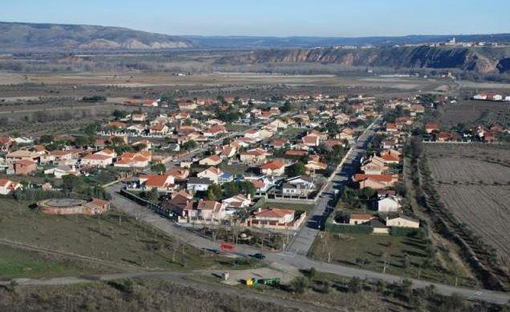
Torremocha del Jarama
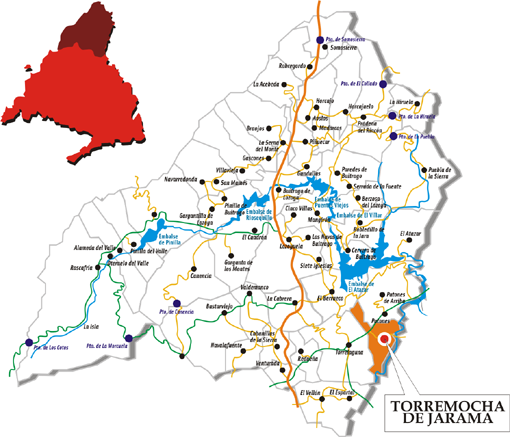
Torremocha on north of the Autonomous Region of Madrid
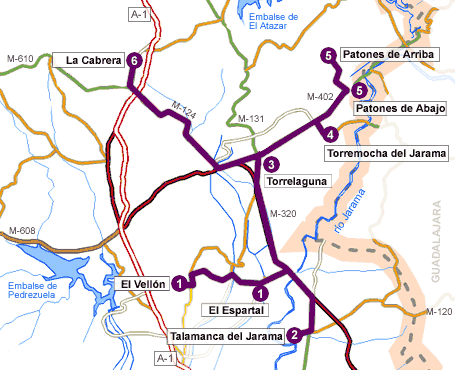
Torremocha on the map close up
But, at that time, more than 50 people, who could not buy or contribute the 154,000 euros, contributed by the 54 members, had already left.
A lot of perseverance and effort had to have, until 2013, finally could move to their new home: a building "bioclimatic, geothermal, with little environmental impact and low energy consumption", according to Jaime Moreno, former NODO (Newsreels and Documentaries) exredactor and now a resident of Trabensol.
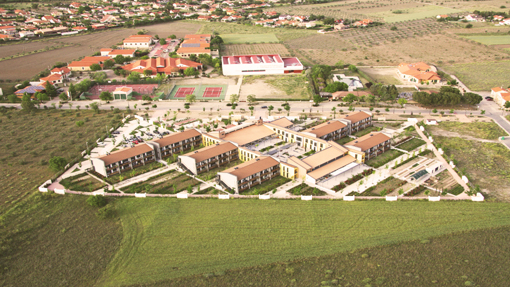
A view of Trabensol

The entrance to the Social Centre Trabensol
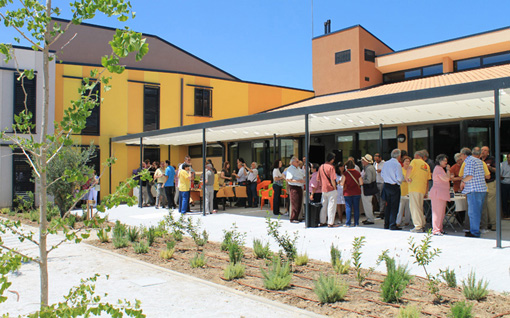
The entrance of the Centre close up
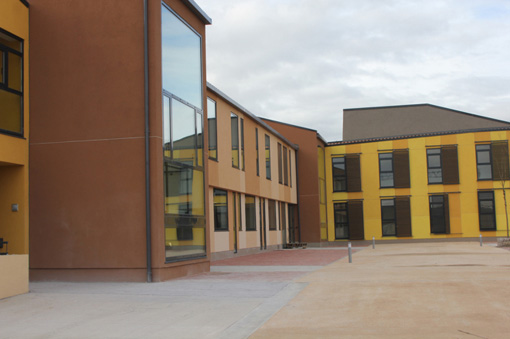
Another view of the main entrance of the Centre
Each one of the 54 apartments, with kitchen-living room, bedroom and terrace, is joined by a dining room, gardens, vegetable garden, greenhouse, library, gym, therapeutic bath and a multitude of rooms to meet, paint, renovate furniture, do yoga, pilates or chikung and even a space reserved for when they begin to fall into situations of dependency, with medical stretchers, that now are used to do acupuncture and massage.
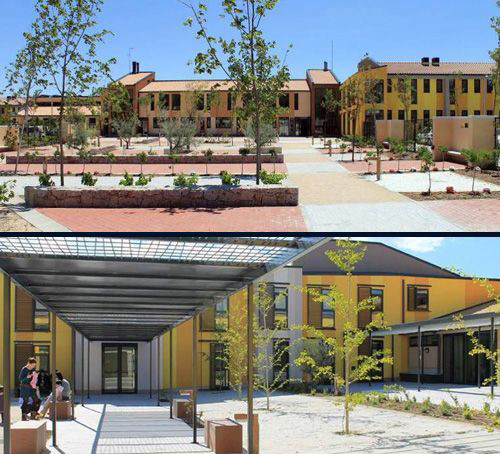
Apartments and the entrance of the Centre
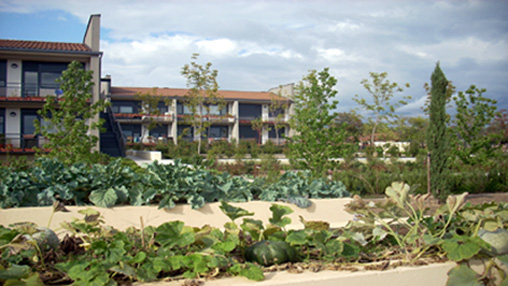
A vegetable garden in front of the apartments
Each apartment has its own small vegetable garden:
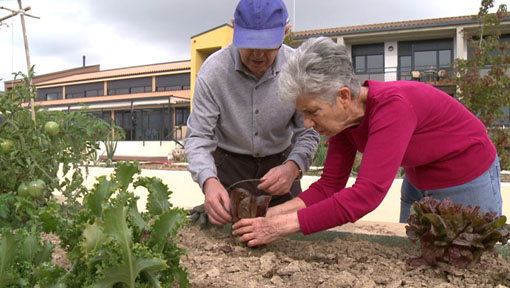
A small vegetable garden
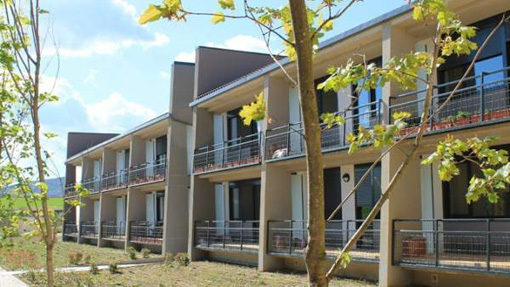
Several apartments

Inside an apartment

The kitchen of an apartment
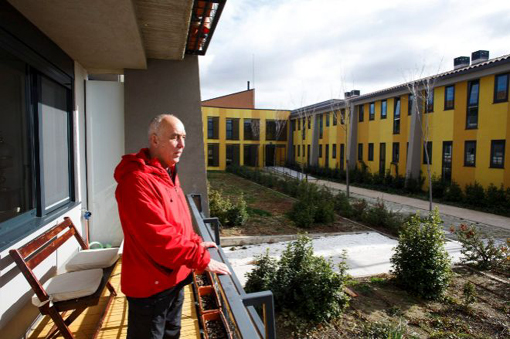
The terrace of an apartment
They themselves decided what they had to have, before putting into competition the project, that would be commissioned by an architects firm, because as Moreno says, they wanted to continue living "independently" and without conditioning their families.
"The idea is to share this phase of your life with others and, at the same time, generate mutual help systems, to solve the problems one has with age", explains the researcher and professor at the Open University of Catalonia, Daniel López.
This researcher is beginning a study to "map" all the initiatives of collaborative housing for older people, that are underway, in Spain, and that are "an alternative solution" to the traditional residence or to the loss of autonomy, that entails going to live with the family.
He wants to study what factors have allowed -or not- to develop and consolidate these initiatives and what impact it has had on the elderly and their environment.
He does not enter into speculations, but López points out that similar studies, from other countries, show that collaborative housing, in the elderly, "has a direct effect on combating loneliness" and "increases social participation and healthy ageing".
In addition, it could have an economic effect: it reduces hospital admissions and encourages the local economy.
This "social centre of coexistence for the elderly" of Madrid (Trabensol) --together with Los Milagros, in Malaga-- is a reference for an option, that draws attention to many who are beginning to see retirement, but also for the neighbours of the village, who are approaching all days to perform the free activities they perform: Nordic walking, read theater, cineforum, debates on current events, pilates, regional dances, yoga, meditation, etc.
In the centre reigns "the principle of solidarity and mutual aid", as described by the President, Paloma Rodríguez, and Jaime Moreno, and if someone has to go down to the doctor, there is always another person, who accompanies him –or her-- or before going to buy, they ask the neighbours if they need something.
Moreno describes his cooperative as "an exciting project", that they have created from "the debate and consensus" and that allows them to remain active.
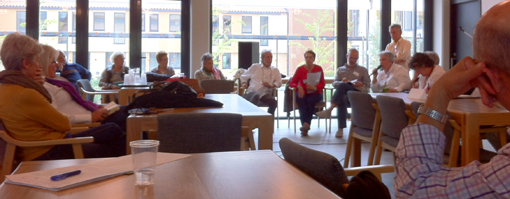
A meeting
Beyond the facilities and activities, the "best" is the human relationship and ageing accompanied, because by the problems they will have to face, "the feeling of being wrapped is something else".
In addition to the 54 apartments, Trabensol has several common areas: Cafeteria, meeting rooms, dining room, library, gymnasium, heated therapeutic bath, painting workshop.
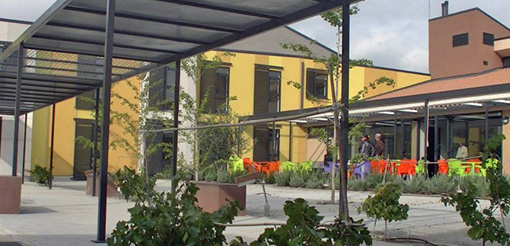
The terrace of the coffe shop

The social dining room
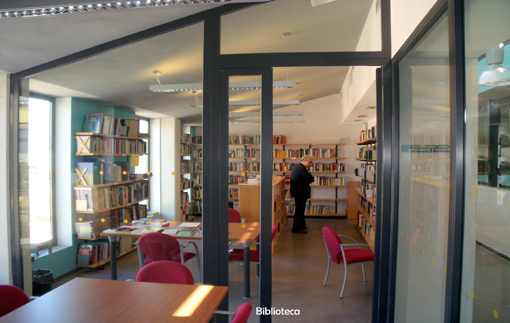
The entrance of the library

Inside the library
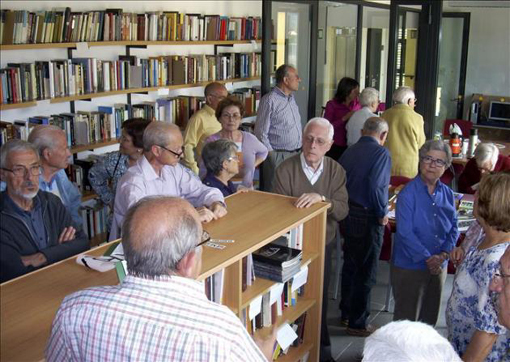
The elderly people searching a book

Gym and heated therapeutic bath
Well, I hope that you will like this article and hope that you want to create a centre similar to TRABENSOL.
Until my next post, kind regards,
Luis.
Sponsored by Costaluz Lawyers.
Please click below:
